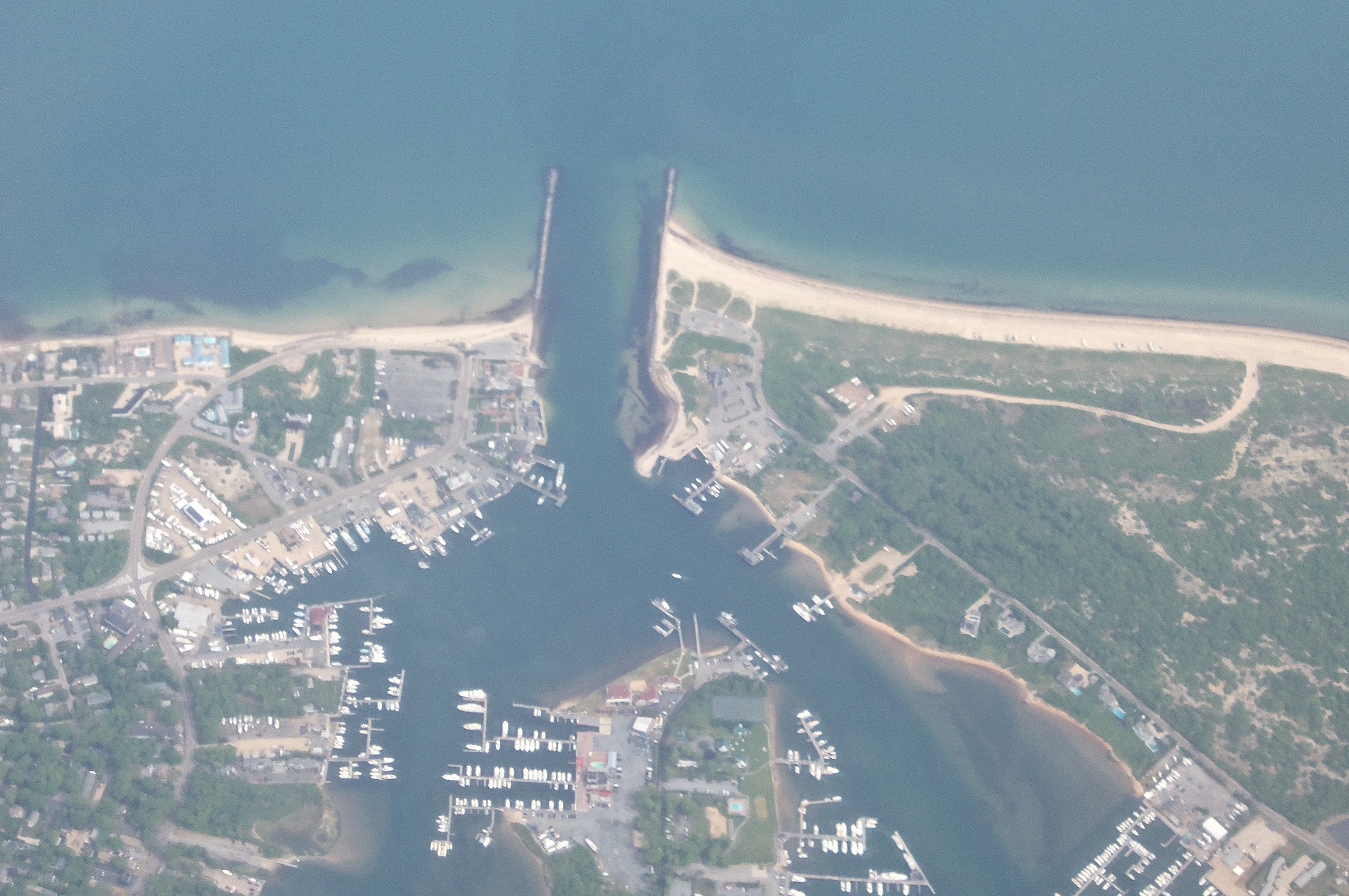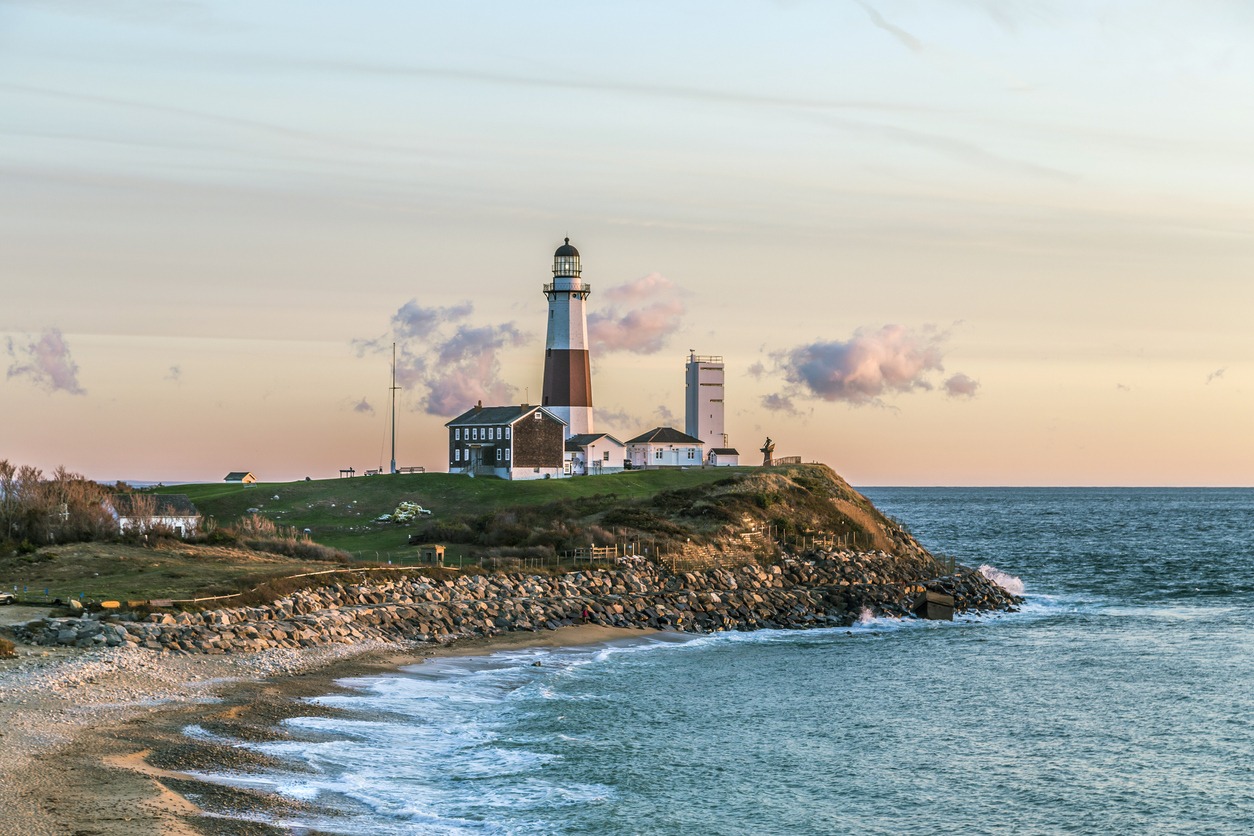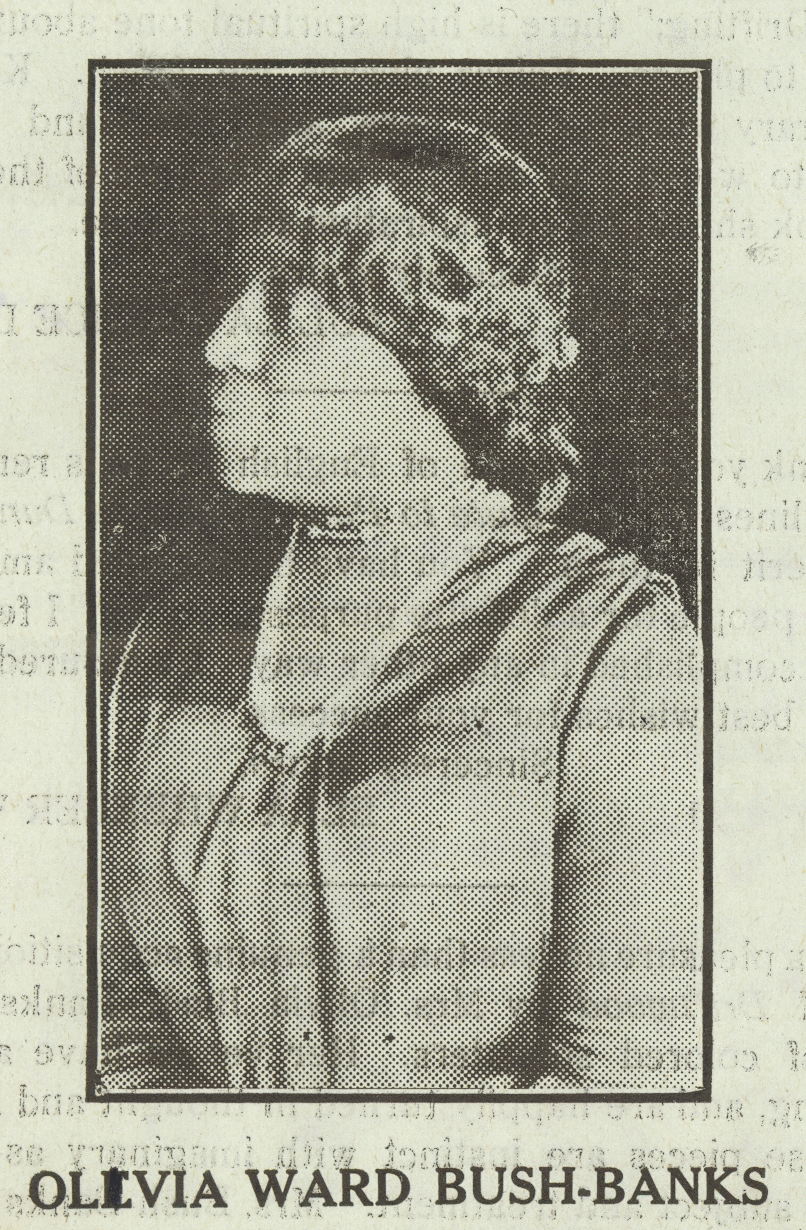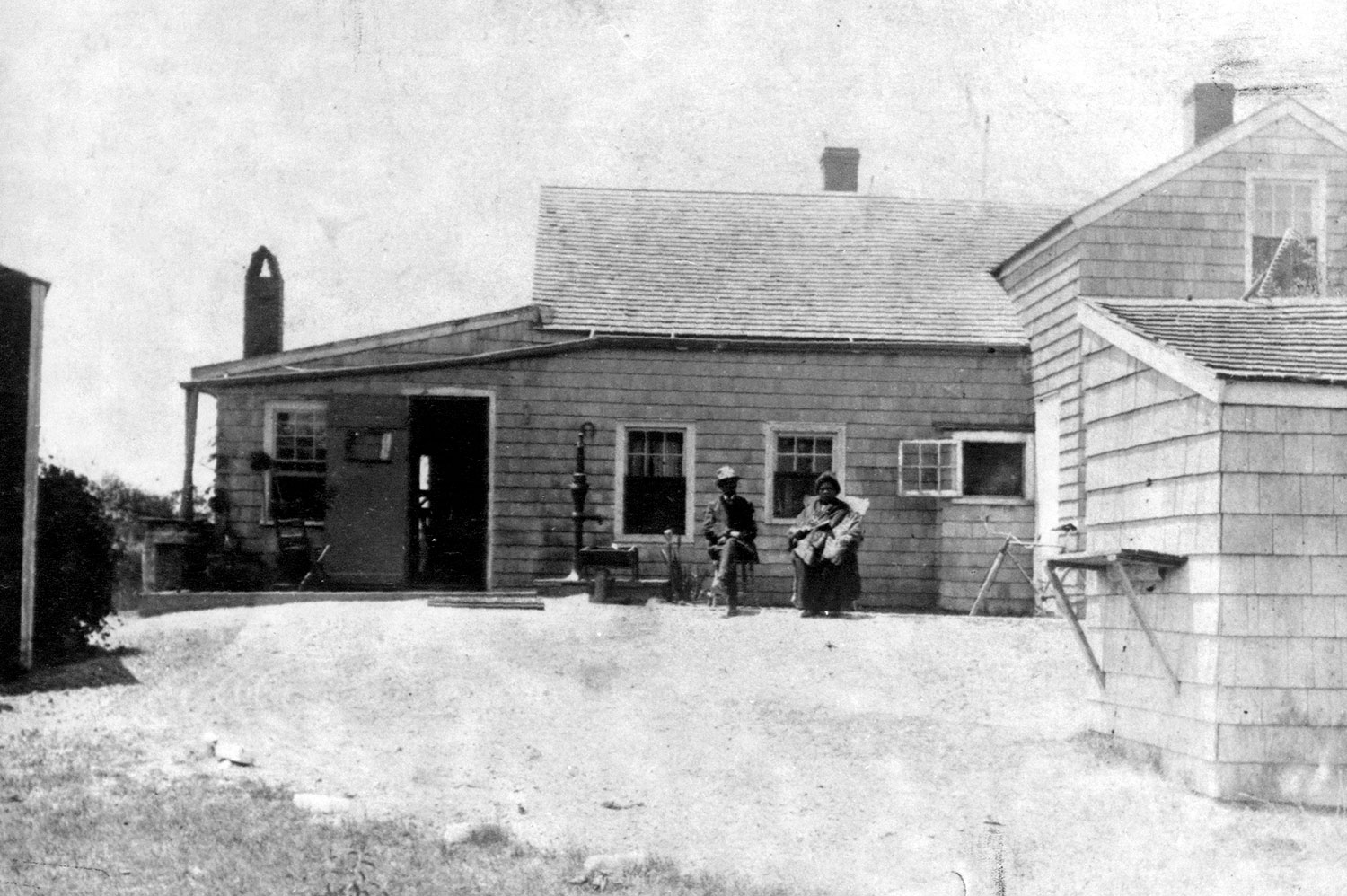The Montauk Tribe’s history is as rich and varied as the landscapes of Long Island where they originally settled. Also known as the Montaukett, this group is a part of the larger Algonquian-speaking peoples. Their roots can be traced back to the early Algonquian tribes, with a culture deeply connected to the natural world around them.
Pictured: Olivia Ward Bush-Banks (February 27, 1869 – April 8, 1944) was an American author, poet and journalist of African-American and Montaukett Native American heritage.
Their culture was characterized by intricate social structures, spiritual beliefs, and survival practices intricately tied to the land and the sea. As European settlers arrived, the Montaukett faced new challenges and entered into a period marked by conflict, alliances, and eventual dispossession of their lands. Throughout these trials, they strived to maintain their cultural identity.
Despite being confronted with numerous obstacles, including legal battles to reclaim their territory and rights, the Montaukett have shown remarkable resilience.
Their ongoing efforts in cultural revitalization bring to light the enduring spirit of the Montauk people and their unbreakable connection to the Montauk area which continues to grow and evolve today.
Key Takeaways
- The Montauk Tribe has a deep-rooted history that began well before European contact.
- Legal struggles over land and cultural identity have marked the tribe’s more recent history.
- Efforts towards cultural revitalization reflect the Montaukett’s resilience and enduring presence.
The Origins of the Montaukett Tribe
The Montaukett tribe, signifying part of the rich tapestry of Native American history, has origins deeply rooted in the eastern part of Long Island. They were part of the larger group of Algonquian-speaking tribes, known for their common linguistic traits and cultural practices.
- Location: The Montaukett inhabited the area around Montauk, a name derived from the Mohegan-Montauk-Narragansett language.
- Confederacy: They were part of a confederacy of tribes which included the Shinnecock, Manhasset, Massapequa, Montauk proper, Patchogue, and Rockaway.
Their societal structure and way of life were indicative of many Algonquian tribes, with a subsistence largely dependent on fishing, hunting, and agriculture. Women played a key role in farming while men were primarily responsible for hunting and fishing.
Belonging to the broader cultural sphere of the Woodland Indians, the Montaukett managed their resources effectively, fostering a deep connection with the ecosystem of Long Island.
Historical records suggest that the Montaukett were influential in the region, engaging in trade and political alliances with other Native American tribes and early European settlers.
The tribe’s leadership was hierarchical, with sachems (leaders) who wielded significant authority within the tribe and in matters with outsiders. The territory of the Montaukett, rich in natural resources, was highly valued by colonial powers, setting the stage for future legal battles over land rights and sovereignty.
In essence, the Montaukett’s origins are emblematic of a resilient tribe that played a pivotal role in the historical tapestry of Native American presence on Long Island.
Geography and Early Settlement
The Montauk Tribe, historically significant to Long Island, inhabited the easternmost area of what is now known as New York. This region, characterized by its diverse ecosystems ranging from sandy shores to dense forests, provided a bountiful environment for the Native American tribe.
East Hampton, part of the original settlement area, became a central locality for the Montauk people. The Montaukett, as they were also known, capitalized on the rich fishing grounds and fertile land that the location offered. Their settlements took advantage of the prime geographic features, enabling the tribe to thrive.
The Montauk’s early settlement practices included:
- Establishing villages on high ground for defense
- Utilizing coastal waters for fishing and shellfishing
- Hunting and gathering in the dense woodland areas
- Practicing agriculture on the open plains
In 1658, the Montaukett sachem Wyandanch gave settlers the rights to pasturage, indicating symbiotic relationships and agreements made with European settlers. By the end of the 17th century, the entirety of the Montauk peninsula was purchased from the Montaukett Indians by East Hampton proprietors, leading to a new chapter in the area’s development.
Detailed records during the 17th century verify that the tribe was an integral part of Long Island’s development, with their lands eventually becoming key areas within New York. The Montauk’s adaptation to the geography of their homeland set the foundation for the settlement patterns seen on Long Island today.
Cultural Practices and Lifestyle
The Montauk Tribe of Long Island were masters of their coastal environment, with a rich cultural heritage that encompassed a unique blend of agriculture, settlement structures, and societal organization. Artifacts and language reveal a deep connection with their surroundings and a sophisticated means of communication and trade.
Diet and Agriculture
The Montauk people’s diet was abundant and well-rounded, consisting mainly of fish, deer, corn, squash, beans, and berries. Fishing was a crucial part of their sustenance, especially shellfish like clams, which were plentiful in the waters around Long Island. They expertly managed agriculture, growing the “Three Sisters” — corn, beans, and squash — which complemented each other nutritionally and environmentally.
Housing and Settlements
The Montauk Tribe constructed their homes, known as wigwams, from a framework of trees covered with woven mats or bark. These structures were well-suited to the Long Island climate and could be found in the villages throughout their territory, which sometimes included fortified areas or forts. These settlements were typically situated to take advantage of the natural resources available in their coastal environment.
Social Structure and Leadership
The tribe was organized under the leadership of a sachem, a position that held great respect within the tribe. The sachem, or chieftain, guided the tribe in decision-making and played a pivotal role in the trade networks that extended far beyond their own tribal lands. Social status within the tribe was often linked to familial ties and one’s role in the community.
Artifacts and Language
The Montauk Tribe were known for their creation of wampum, disk-shaped beads crafted from the shells of clams and whelks, which played a significant role in their economy as currency and as ceremonial offerings. The Montauk language, part of the Algonquian language family, was a vital aspect of their identity, though now it exists only in written records and artifacts. These artifacts are a testament to their craftsmanship and way of life.
First Contacts with Europeans
The Montauk Tribe, indigenous to Long Island, had their initial encounters with Europeans in the 16th and 17th centuries. These first contacts were primarily with English and Dutch settlers, who arrived on the shores seeking to establish new colonies. The interactions often involved trading, where the Montauk Tribe used wampum, a series of bead-like items crafted from shells, as their medium of exchange.
- Trade: The Montauk’s adeptness in creating wampum made them economically important, as the beads became a favored trade item among settlers.
- Impact: European goods received in trade began to integrate into Montauk life, influencing their culture and economy.
European settlers, particularly the English, were keen to engage in commerce with the Montauks, seeing the value in the wampum for their transactions. This trade was mutually beneficial at first, but eventually led to the Montauks’ displacement and loss of their lands due to treaties and transactions that favored the settlers, such as the 1686 land sale mentioned in the account from New York Spaces.
Here are some specific points of contact and subsequent effects that followed between the Montauk Tribe and Europeans:
- European Settlers’ Arrival: With the arrival of settlers, traditional Montauk lands were claimed and altered, impacting the tribe’s way of life.
- Mutual Dependencies: Europeans depended on the Montauk for local knowledge and goods, while the tribe adopted some European technology and practices in return.
The relationship between the Montauk Tribe and European settlers was complex, characterized by initial mutual benefit that gradually gave way to the dominance of European interests.
Conflict and Alliance
The Montauk Tribe’s history is marked by a complex web of conflict and alliance, involving interactions with Native American tribes and European settlers, which significantly impacted the tribe’s fate.
Relations with Other Tribes
The Montauk was part of a confederacy on Long Island that included other tribes such as the Shinnecock and Massapequa. They often engaged in trade and cultural exchange. However, their relations were not free from conflict.
For instance, an invasion by a tribe from Rhode Island led to violent encounters, which included the kidnapping of a Montauk leader’s daughter, though she was eventually released with assistance from English allies.
Encounters with European Colonists
Early encounters between the Montauk Tribe and European colonists involved trading valuable wampum. However, land pressures escalated tensions.
During the 17th century, the Montauk came under English and Dutch influence, gradually losing land through transactions such as the sale to the East Hampton proprietors in 1686. Notable figures like Wyandanch, the Montauk sachem, cultivated a close but complicated relationship with the English to navigate these growing pressures on the tribe’s resources and sovereignty.
The Montaukett and the American Revolution
As the struggle between the English and the American colonies unfolded, the Montaukett, like other tribes, were affected by the shifting political landscape.
The decisions by tribal leaders regarding the Montaukett’s position in relation to the conflict with the British varied, with some aligning with the rebels while others maintained neutrality.
Nonetheless, the American Revolution and the subsequent formation of the United States introduced new challenges for the Montaukett, as the young nation continued to expand westward, often at the expense of Native American lands.
Land Dispossession and Legal Struggles
The Montauk Tribe has faced significant challenges concerning land dispossession and their ongoing legal struggles to reclaim rights. This complex history is rooted in a series of land transactions, legal disputes, and a tenacious fight for official recognition.
Land Transactions and Deeds

Historical records indicate that Arthur W. Benson acquired the land of Montauk in 1879 through a transaction that acknowledged the rights of the Montauk Tribe. This area, including Lake Montauk, was significant to the tribe both culturally and historically.
The Dongan Patent issued in 1686 had previously conferred the land to the Montauk Proprietors, a group of English settlers. However, disputes arose regarding unpurchased lands, and the Montauk Tribe’s legal status came into question as to whether colonial deeds had been properly accounted for and honored through the centuries.
The Struggle for Recognition
Striving for legal recognition, the Montauk Tribe’s situation mirrors that of the Brothertown Indians movement, where tribes sought acknowledgment of their unique cultural and political status.
Despite documented ownership and historical occupancy, the tribe’s land claims faced opposition, complicating their efforts for compensation and a declaration of their rights to the land deemed extinct by certain legal standards.
The ongoing legal battles point to a continued push towards affirming the reservation’s rights and restoring the tribe’s place in history.
Cultural Revitalization and the Modern Tribe
The Montaukett, a Native American tribe from Eastern Long Island, are experiencing a cultural renaissance. This revitalization effort is multifaceted, engaging community members and the broader public alike.
Central to these efforts is the preservation and teaching of their language and traditions.
Language Revitalization: A sustained push to revive the native language is bringing the Montaukett’s linguistic heritage back into practice. Community initiatives often include language workshops and educational programs.
- Cultural Education: They are actively educating their members, especially the youth, about traditional practices, ceremonies, and history. This is critical for maintaining the cultural identity of the Montaukett.
Museum and Cultural Sites: The Montauk Indian Museum serves as a key institution in this cultural revitalization. It provides visitors with the opportunity to explore early Native American life, featuring:
- Workshops
- Lectures
- Film screenings
- Exhibits on traditional skills and materials
The museum emphasizes the Montaukett’s presence and history in the area, offering a tangible connection to the past through artifacts and storytelling.
Legal Recognition Efforts: Modern Montaukett are also working towards reclaiming their legal status, which has implications for the recognition and preservation of their culture. These efforts are vital for regaining control over their historical narrative and ensuring their rights.
Montauk Tribe and the Growth of Montauk Area
The Montauk Tribe has played a pivotal role in the evolution of the Montauk area, influencing its growth and the development of tourism, land use, and economy. As you explore the Montauk Point and its allure for tourists, significant twentieth-century developments, and the tribe’s economic activities, notice how the Montauk Tribe’s history is intertwined with the area’s expansion.
Montauk Point and Tourism

Montauk Point is a beacon for tourists, boasting the Montauk Lighthouse, the oldest in New York State.
Established in 1796, the lighthouse stands as a symbol of maritime guidance off Long Island’s easternmost point, where the Atlantic Ocean meets Long Island Sound.
The development of Theodore Roosevelt County Park and the advent of the Long Island Rail Road facilitated access, making Montauk a leisure destination. Golf enthusiasts also frequent Montauk for its scenic golf courses, adding to the area’s tourist attractions.
Significant Developments in the 20th Century
The early 20th century was transformative for Montauk, highlighted by Carl Fisher‘s vision to create a new resort destination after the stock market crash.
Fisher developed Montauk Manor and other infrastructure, though his plans were never fully realized.
Furthermore, the expansion of the U.S. Coast Guard presence amplified Montauk’s strategic importance, signaling a shift towards modernity while still reflecting on the past, as areas like Lake Wyandanee remained vital community landmarks.
Economic Activities
Historically, the Montauk Tribe engaged in activities like fishing and whale oil production, shaping the local economy.
In modern times, Montauk has diversified its economic portfolio to include tourism-driven ventures and continues the legacy of marine pursuits.
Annual events like the cattle drives, which began in East Hampton, reflect the agrarian roots with livestock grazing at Montauk’s pastoral expanses well into the 20th century. The establishment of schools and local businesses further evidences Montauk’s growth beyond its tribal origins.
Frequently Asked Questions
What are some traditional customs and beliefs of the Montauk tribe?
The Montauk tribe, part of the greater Algonquian-speaking tribes, upheld a variety of customs including communal fishing and whaling, which reflected their deep connection to the sea. Their beliefs were rooted in a close spiritual relationship with nature, honoring the harmony between the land and their community.
What types of clothing were traditionally worn by the Montauk tribe?
Traditionally, the Montauk tribe wore clothing suitable for the changing seasons, often made from animal skins such as deer.
During colder months, they adorned themselves with heavier furs, while incorporating wampum, a type of beadwork made from shells, into their garments for decoration and trade.
How can someone trace their heritage back to the Montauk tribe?
Tracing one’s heritage back to the Montauk tribe involves researching historical records and colonial deeds from as early as 1660.
Today, factors such as genealogical DNA testing and connecting with tribal associations may assist individuals in this personal and complex journey.
Who are some notable figures in Montauk tribal history?
Wyandanch, a Montaukett sachem (chief), is a notable figure in the tribe’s history for his role in negotiating with early European settlers. His diplomacy and leadership were central to the survival and adaptation of the Montauk people during a period of great change.
How has the history of the Montauk tribe influenced the region of Montauk, New York?
The Montauk tribe has left a lasting influence on the region. The area’s history as a seasonal pasture for livestock dates back to agreements made with settlers.
The cultural legacy of the Montaukett informs local customs. It continues to shape regional identity in Montauk, New York.


